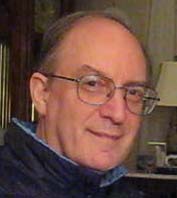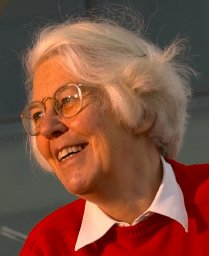博文
ACL历年终身成就奖人物大全
||
整理一下ACL终身成就的人物,所有资源均来自网络。
Jerry Hobbs (2013)  http://www.isi.edu/~hobbs/
http://www.isi.edu/~hobbs/
Jerry R. Hobbs (born 25 January 1942) is a prominent researcher in the fields of computational linguistics, discourse analysis, and artificial intelligence.
Charles Fillmore (2012) http://blog.sciencenet.cn/blog-39714-770337.html
http://blog.sciencenet.cn/blog-39714-770337.html
Charles J. Fillmore (August 9, 1929 – February 13, 2014) was an American linguist and Professor Emeritus of Linguistics at the University of California, Berkeley. He received his Ph.D. in Linguistics from the University of Michigan in 1961. Fillmore spent ten years at The Ohio State University and a year as a Fellow at the Center for Advanced Study in the Behavioral Sciences before joining Berkeley's Department of Linguistics in 1971.
http://linguistics.berkeley.edu/charles-j-fillmore-1929-2014
Eugene Charniak (2011) http://cs.brown.edu/~ec/ 
Eugene Charniak is Professor of ComputerScience. and Cognitive Scienceat Brown University.He received an A.B. degree in Physics from University ofChicago and a Ph.D. from M.I.T. in Computer Science. He haspublished four books: Computational Semantics, withYorick Wilks (1976); Artificial Intelligence Programming(now in a second edition) with Chris Riesbeck, Drew McDermott, andJames Meehan (1980, 1987); Introduction to ArtificialIntelligence with Drew McDermott (1985); and StatisticalLanguage Learning (1993). He is a Fellow of the AmericanAssociation of Artificial Intelligence and was previously a Councilorof the organization. His research has always been in the area oflanguage understanding or technologies which relate to it, such asknowledge representation, reasoning under uncertainty, and learning.Over the last few years he has been interested in statisticaltechniques for language understanding. His research in this area hasincluded work in the subareas of part-of-speech tagging,probabilistic context-free grammar induction, and, more recently,syntactic disambiguation through word statistics, efficient syntacticparsing, and lexical resource acquisition through statistical means.
William A. Woods (2010)  http://parsecraft.com/
http://parsecraft.com/
Dr. William A. Woods is internationally known for his research innatural language processing, continuous speech understanding,knowledge representation, and knowledge-based search technology. Heis currently interested in using technology to help people organizeand use information in organizations. He earned his doctorate atHarvard University, where he then served as an Assistant Professorand later as a Gordon McKay Professor of the Practice of ComputerScience. He is a past president of the Association for ComputationalLinguistics, a Fellow of the American Association for ArtificialIntelligence, and a Fellow of the American Association for theAdvancement of Science.
Dr. Woods built one of the first natural language questionanswering systems (LUNAR) to answer questions about the Apollo 11moon rocks for the NASA Manned Spacecraft Center while he was at BoltBeranek and Newman (BBN) in Cambridge MA. At BBN, he was a PrincipalScientist and manager of the AI Department in the '70's and early'80's. He was the principal investigator for BBN's early work innatural language processing and knowledge representation and for itsfirst project in continuous speech understanding. Subsequently, hewas Chief Scientist for Applied Expert Systems, Inc. and PrincipalTechnologist for On Technology Inc., two startup companies inCambridge MA. In 1991, he joined Sun Microsystems Laboratories as aPrincipal Scientist and Distinguished Engineer, and in 2007, hejoined ITA Software, Inc. as a Distinguished Software Engineer.
Fred Jelinek (2009) -http://old-site.clsp.jhu.edu/~jelinek/jelinek.html 
Frederick Jelinek (18 November 1932 – 14 September 2010) was a Czech American researcher in information theory, automatic speech recognition, and natural language processing. He was well known for his oft-quoted quip that "Every time I fire a linguist, the performance of the speech recognizer goes up".[note 1]
Born in Czechoslovakia just before the war, his family managed to emigrate to the United States in the early years of the communist regime. He studied engineering at the Massachusetts Institute of Technology and taught for 10 years at Cornell University before being offered a job at IBM Research. There his team essentially revolutionized approaches to computer speech recognition and machine translation. After IBM, he went to head the Center for Language and Speech Processing at Johns Hopkins University for 17 years, and he was still working on the day of his death. He had been married since 1961 to Czech screenwriter Milena Jelinek.
Yorick Wilks (2008) -  http://staffwww.dcs.shef.ac.uk/peopl/Y.Wilks/
http://staffwww.dcs.shef.ac.uk/peopl/Y.Wilks/
Yorick Wilks FBCS (born 27 October 1939) is a British Computer Scientist who is Professor of Artificial Intelligence (Emeritus) at the University of Sheffield, a Senior Research Fellow at the Oxford Internet Institute, and a Senior Scientist at the Florida Institute for Human and Machine Cognition.
Lauri Karttunen (2007) -![[picture of Lauri Karttunen]](http://www.stanford.edu/%7Elaurik/LauriKarttunen.jpg) www.stanford.edu/~laurik/
www.stanford.edu/~laurik/
Karttunen received his Ph.D. in Linguistics in 1969 from Indiana University in Bloomington.[3] At the University of Texas at Austin in the 1970s he worked mostly on semantics. He published a series of seminal papers on discourse referents, presuppositions, implicative verbs, conventional implicatures, and questions. In the 1980s Karttunen became, along with Ronald M. Kaplan, Martin Kay, and Kimmo Koskenniemi, one of the pioneers in computational linguistics on the application of finite-state transducers to phonology and morphology.[4] Karttunen and Kenneth R. Beesley published a textbook on Finite State Morphology and a set of applications for creating morphological analyzers.[5] Commercial versions of the finite-state technology developed by Karttunen and his colleagues at PARC and XRCE have been licensed by Xerox to many companies including SAP and Microsoft. Karttunen retired from PARC in 2011. He is currently working on Language and Natural Reasoning at CSLI.
Eva Hajicova (2006) - http://ufal.mff.cuni.cz/eva-hajicova 
Eva Hajičová (born August 23, 1935) is a Czechlinguist, specializing in topic–focus articulation and corpus linguistics. In 2006, she was awarded the ACL Lifetime Achievement Award.
Martin Kay (2005) -  http://www.stanford.edu/~mjkay/
http://www.stanford.edu/~mjkay/
Prof. Martin Kay is Professor of Computational Linguistics at Stanford
U. and Honorary Professor at Saarland U. He studied at Trinity
College, Cambridge. Kay then worked at Rand Corporation, the U. of
Califormia at Irvine and XEROX PARC. Kay is one of the pioneers of
computational linguistics and machine translation. He was responsible
for introducing the notion of chart parsing in computational
linguistics, and the notion of unification in linguistics
generally. With Ron Kaplan, he pioneered research and application
development in finite-state morphology. He has been a longtime
contributor to, and critic of, work on machine translation. In his
seminal paper "The Proper Place of Men and Machines in Language
Translation," Kay argued for MT systems that were tightly integrated in
the human translation process. He was reviewer and critic of EUROTRA,
Verbmobil, and many other MT projects. Kay is former Chair of the
Association of Computational Linguistics and ungoing Chair of the
International Committee on Computational Linguistics. He was a Research
Fellow at the Xerox Palo Alto Research Center until 2002. He holds an
honorary doctorate of Gothenburg U. This year, Kay received the
Lifetime Achievement Award of the Association for Computational
Linguistics for his sustained role as an intellectual leader of NLP
research.
Karen Sparck Jones (2004) -  http://www.cl.cam.ac.uk/archive/ksj21/
http://www.cl.cam.ac.uk/archive/ksj21/
Karen Ida Boalth Spärck Jones was born in Huddersfield, Yorkshire, England. Her father was Owen Jones, a lecturer in chemistry, and her mother was Ida Spärck, a Norwegian who moved to Britain during World War II. They left Norway on one of the last boats out after the German invasion in 1940.[2] Spärck Jones was educated at a grammar school in Huddersfield and then Girton College, Cambridge from 1953 to 1956, reading History, with an additional final year in Moral Sciences (philosophy). She briefly became a school teacher, before moving into Computer Science. During her career in Computer Science, she campaigned hard for more women to enter computing.[2] She was married to fellow Cambridge computer scientist Roger Needham until his death in 2003. She died 4 April 2007 at Willingham in Cambridgeshire.
Makoto Nagao(長尾 真 (2003) 
Makoto NagaoNagao Makoto?, born October 4, 1936[3]) is a Japanesecomputer scientist. He contributed to various fields: machine translation, natural language processing, pattern recognition, image processing and library science. He was the 23rd President of Kyoto University (1997–2003)[4] and the 14th Director of National Diet Library in Japan (2007–2012).
Dr Nagao graduated from Kyoto University, Department of Electrical Engineering in 1959, and obtained MS and PhD degrees
from Kyoto University. After being an assistant and associate professor he became a professor in 1973 at Kyoto University. He was the President of Kyoto University from 1997-2003. He was the President of the National Institute of Information and Communication Technologies from 2004-2007. Then he became the President of National Diet (Congress) Library from 2007-2012. He served as President of the Institute of Electronics, Information and Communication Engineers of Japan (1998-1999), as President of the Information Processing Society of Japan(1999-2000) and President of some other academic societies in Japan. He established the International Association for Machine Translation (IAMT) in 1991 and the Natural Language Processing Society of Japan in 1994, and took offices as the first President.
He obtained many awards including IEEE Emanuel R. Piore Award, Medal of Honor of the International Association of Machine Translation, Lifetime Achievement Award of ACL, Honorary Doctor of the University of Nottingham, Chevalier de la Legion d’Honneur from French President, Japan Prize, Person of Cultural Merit from Japanese Government and several high class Japanese prizes.His research activities are in the areas of pattern recognition, image processing, natural language processing, machine translation, digital library and artificial intelligence in general. He is the first researcher for human face recognition and one of the first who developed practical machine translation systems in the world. His system was a big influence on the systems developed afterwards. He proposed a new machine translation principle called example-based machine translation in 1984 which is widely used nowadays in many places in the world. He developed the first practical digital library in the world in 1994 which included many highly creative structures for the organization of text materials for convenient access to wanted information, and gave an impact upon digital library research in Japan and over the world.
Aravind Joshi (2002) http://www.cis.upenn.edu/~joshi/ 
Aravind Krishna Joshi (Marathi: अरविंद कृष्ण जोशी) (born August 5, 1929 in Pune, India) is the Henry Salvatori Professor of Computer and Cognitive Science in the computer science department of the University of Pennsylvania. Joshi defined the tree-adjoining grammar formalism which is often used in computational linguistics and natural language processing.
Joshi studied at Pune University and the Indian Institute of Science, where he was awarded a BE in electrical engineering and a DIISc in communication engineering respectively. Joshi's graduate work was done in the electrical engineering department at the University of Pennsylvania, and he was awarded his PhD in 1960. He became a professor at Penn and is the co-founder and co-director of the Institute for Research in Cognitive Science.
https://blog.sciencenet.cn/blog-39714-770341.html
上一篇:学术会议名称溯源正名:workshop conference seminar
下一篇:ScienceTree科普科研一体化设想